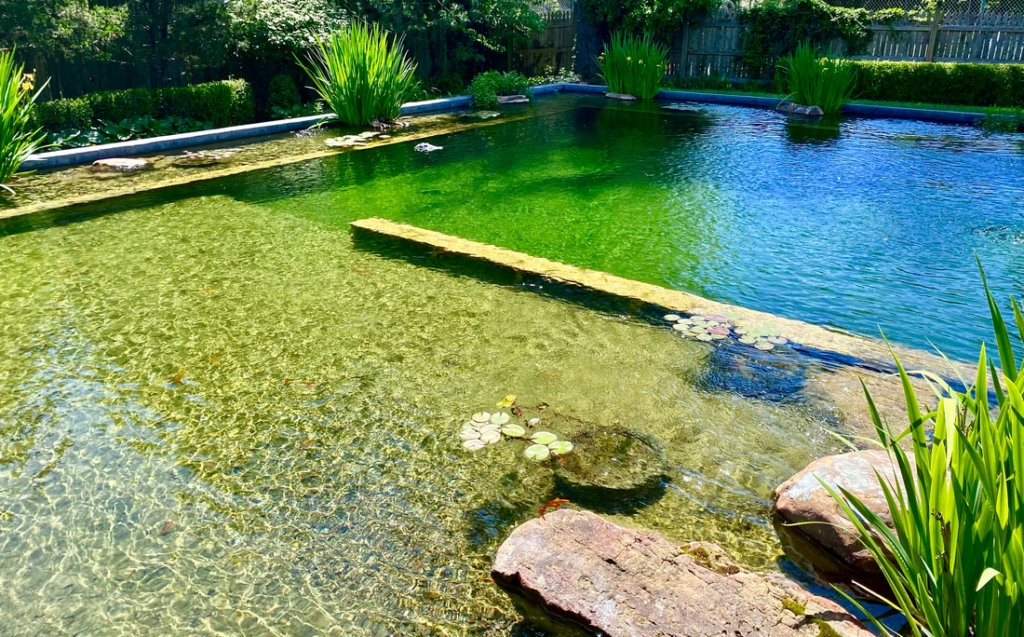Unlocking Sustainable Serenity with Swim Ponds
Building an eco-friendly swim pond can significantly enhance your backyard while benefiting the environment. Swim ponds are natural, self-cleaning ecosystems that utilize plants for filtration instead of harsh chemicals. This makes them attractive options for homeowners who want sustainable alternatives to traditional swimming pools. As the advantages of swim ponds become more recognized, their popularity is on the rise.
One of the main benefits of swim ponds is their ability to attract wildlife. Unlike conventional pools that often deter animals, swim ponds create habitats that encourage local flora and fauna to thrive. In addition, these ponds enhance the beauty of your garden, providing a peaceful space that harmonizes aesthetics and functionality. Embracing this eco-friendly option can also lead to significant health benefits, as swimming in naturally filtered water promotes well-being.
Recent trends show a growing interest among homeowners in sustainable landscaping solutions, including swim ponds. As you explore creative methods to construct your own pond, it’s essential to understand the key components and benefits involved. Your journey toward an eco-friendly swim pond begins with assessing the materials and techniques that positively impact both you and the environment.
Description: A beautifully designed natural swim pond integrated into a lush green landscape. (Source: Total Habitat)
What Can You Upcycle for Your Swim Pond?
When it comes to constructing an eco-friendly swim pond, using reclaimed materials can greatly reduce your environmental footprint and construction costs. Many everyday items can be repurposed into functional components of your pond. Here are some popular materials to consider:
-
Reclaimed Wood: Ideal for creating decorative borders or decking around your swim pond, reclaimed wood adds aesthetic charm while minimizing the need for new lumber.
-
Stones and Boulders: Salvaged stones can form natural barriers or landscaping features, enhancing the pond’s appearance while utilizing materials that would otherwise go to waste.
-
Old Pool Shells: Repurposing an above-ground pool structure can serve as the base for your swim pond, effectively reducing both costs and waste.
-
Recycled Glass: Incorporating crushed glass into your filtration system or as a decorative element makes your pond visually appealing while helping the environment.
These innovative uses reduce landfill waste and add unique character to your swim pond. By creatively employing reclaimed materials, you not only serve practical purposes but also tell a meaningful story about sustainability. For instance, you can transform an old shipping container into a functional filtration system or a stylish seating area adjacent to your pond.

Description: A DIY miniature swimming pool made from upcycled materials showcasing creativity in pond construction. (Source: Barley and Birch)
Saving Green While Going Green: Cost-Effective Construction
Building a swim pond can be financially advantageous, especially when incorporating reclaimed materials. While initial estimates for swim pond construction may vary, there’s considerable potential for savings if you approach the project resourcefully.
Consider utilizing community resources like local classifieds or recycling centers, which often have a wealth of reclaimed materials available at lower costs. Scouring these outlets can yield free or inexpensive items to help you build an aesthetically pleasing structure without exceeding your budget.
Additionally, undertaking a DIY approach allows for affordability while maintaining quality. By prioritizing sustainable practices, you not only minimize costs associated with harmful chemicals but also reduce long-term maintenance expenses typical of traditional pools.

Description: Infographic detailing the cost comparison of building natural pools, providing valuable budgeting insights. (Source: Fixr)
Overcoming Challenges with Reclaimed Materials
Utilizing reclaimed materials in your swim pond construction can present unique challenges that require careful planning. One common issue is sourcing materials that are both visually appealing and structurally sound. Depending on your location, finding the right materials might require time and patience.
You may also encounter issues related to the durability and compatibility of your reclaimed materials. For example, wood may need treatment to withstand moisture, while recycled glass must be properly processed to remove sharp edges. Thus, it’s important to invest time in preparing these materials for their intended use.
Maintenance is another concern when working with reclaimed materials since they may require more frequent attention compared to new products. Regularly checking for structural integrity and any potential degradation is essential to ensuring the long-term sustainability of your swim pond. By understanding these challenges beforehand, you can better prepare and devise solutions that maximize the benefits of working with reclaimed materials.

Description: An overview of a natural swimming pond showcasing both successful and less successful elements of DIY construction. (Source: Mother Earth News)
Sustaining Your Eco-Friendly Swim Pond for the Long Haul
To ensure the health and sustainability of your eco-friendly swim pond, regular upkeep is vital. Maintaining water quality and supporting biodiversity should be top priorities. Here are some essential tips to effectively manage your pond:
-
Monitor Water Quality: Regularly test the water for pH levels and nutrient balance. Keeping the pH within a range of 7.2 to 7.8 is crucial for fostering a healthy ecosystem.
-
Create a Regeneration Zone: Incorporate a section filled with native aquatic plants to help filter and clean the water naturally. This zone will support beneficial microorganisms that maintain ecological balance.
-
Seasonal Care: Recognize that the needs of your pond will shift with the seasons. Prepare for winter by insulating plants and managing water levels, whereas spring might require cleaning and planting.
Establishing a routine maintenance schedule will help your swim pond flourish, providing a welcoming environment for both wildlife and human enjoyment. Cultivating a thriving ecosystem demands diligence and awareness, but the environmental benefits are well worth the effort.

Description: A diagram illustrating the regeneration zones crucial for the sustainability of natural swimming ponds. (Source: Leopold Community)
Innovative Success Stories: Real-Life Swim Ponds
Countless homeowners have successfully constructed eco-friendly swim ponds using reclaimed materials. These projects not only illustrate innovative design but also demonstrate how creativity can lead to functional solutions.
For instance, one homeowner transformed an old above-ground pool into an enchanting koi pond, shedding light on how existing structures can be repurposed thoughtfully. This approach saved on costs and minimized waste. Another project highlighted the use of reclaimed wood for decking, which provided both access and visual appeal.
These success stories can inspire you and offer practical examples of what is achievable when embracing ecological construction. Engaging with real-life cases encourages you to develop a swim pond that is unique, sustainable, and reflective of your values.

Description: An extensive image showing various innovative designs for natural swimming ponds highlighting their unique features. (Source: New York Times)
Conclusion
Creating an eco-friendly swim pond with reclaimed materials is a fulfilling endeavor that positively impacts both your backyard and the environment. By embracing sustainability, you can cultivate a space that nurtures nature, supports biodiversity, and enhances your overall well-being.
As you embark on this project, remember to employ reclaimed materials creatively, seek savings through community resources, and prioritize maintenance for the longevity of your pond. With thoughtful planning and attention to detail, your swim pond can thrive as a flourishing ecosystem that provides enjoyment for years to come. Happy pond building!

